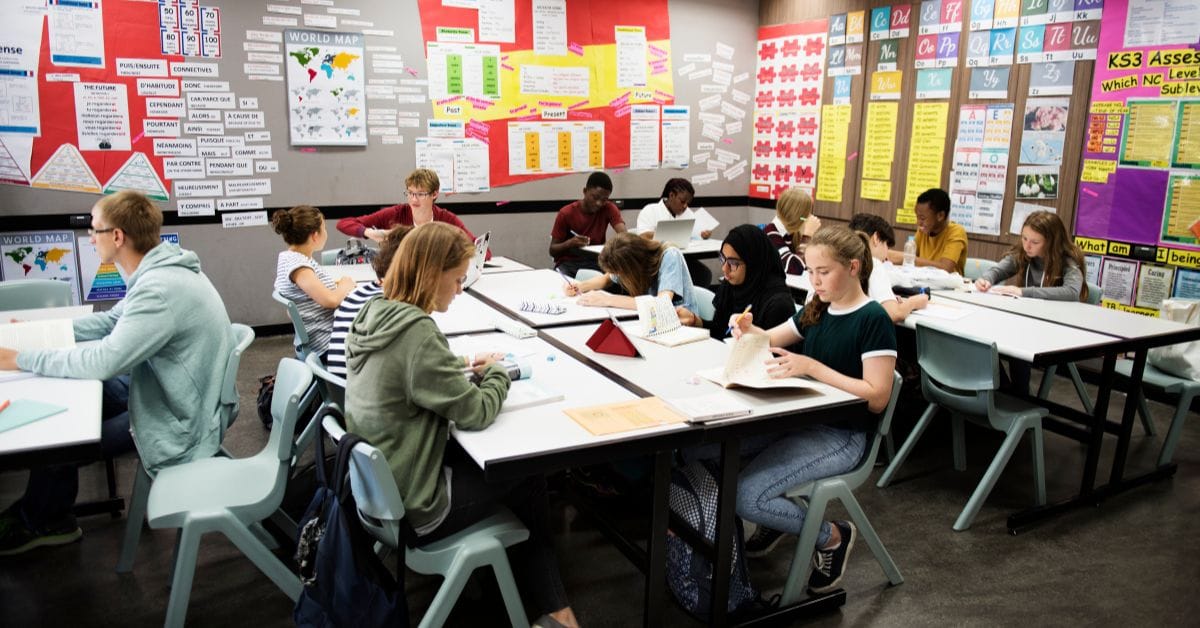A new study shows that Denmark’s public schools are increasingly left with the most vulnerable students as families transfer children to private schools, amplifying social inequality in the education system.
Public Schools Burdened as Weaker Students Concentrate
Students transferring between Danish public schools (folkeskole) and private schools are not doing so evenly across backgrounds, according to a new analysis from the Economic Council of the Labor Movement (Arbejderbevægelsens Erhvervsråd, AE). The data reveals that when students leave public schools for private institutions, they generally come from higher-income families and have fewer social or educational challenges. In contrast, those moving in the opposite direction – from private to public schools – are often struggling and come from more disadvantaged backgrounds.
This pattern means public schools inherit a disproportionate number of students who require additional support. In 2022/2023, 22.2% of students who moved from private to public schools had not started upper secondary education 15 months after 9th grade. By comparison, only 6.4% of students who remained in private schools were in the same situation.
Transfers Deepen Social Divide Between Schools
The AE report is based on comprehensive data from Statistics Denmark and offers a detailed look at the characteristics of students who switch between school types. Overall, 14% of students in 9th grade in the 2022/2023 school year had attended a school of the opposite type in the 1st grade. Of these, 10% moved from folkeskole to private school, while only 4% went the other way.
Those changing from public to private schools tend to come from wealthier homes and are more likely to have university-educated parents. In contrast, students moving from private to public schools are more often from low-income households and have parents without formal qualifications. These students also exhibit higher rates of behavioral, social, and academic challenges, including diagnosed disabilities and child welfare interventions.
Increased Pressure on Public School Resources
The shift has created a heavier burden for public schools. More students now require specialized attention, including support for learning difficulties and social interventions. This puts strain on both human and financial resources. For example, 19.7% of students transferring from private to public schools had an official diagnosis, compared to 13.4% of students who remained in the public system — already a high number.
In response, public schools have had to spend more on special education, draining resources from core academic programs. This trend coincides with a rising number of students who complete 9th grade without sufficient skills in reading and math to pass critical exams.
Civic and Economic Implications
Experts behind the report argue that this imbalance has broader consequences, both for equity in education and for public finances. Public schools, which are designed to accommodate all children regardless of background, are becoming increasingly segregated in practice. As a result, they carry a disproportionate responsibility for supporting students with the greatest needs.
The report recommends that policymakers reevaluate whether private schools are sufficiently incentivized to accept and support students who require more educational resources. Currently, the Danish education system allows parents to choose between public and private schools, with the latter receiving public subsidies. However, the selection processes and socioeconomic differences between families using each system are reinforcing inequalities.
Key Statistics from the Study
– Among students who switched from private to public schools, 22.2% had received at least three court-ordered child welfare reports, compared to only 3.7% of students who remained in private schools.
– 15.9% of students in public schools without a school change had gone through a preventive social intervention, while this figure was 22.2% for those transferring from private schools.
Call for Policy Intervention
The AE report calls on Danish lawmakers to consider policy changes that would ensure a more balanced distribution of vulnerable students between school types. This could include revisiting the funding model for private schools or imposing requirements to accept a more diverse student body.
As demographic shifts and socioeconomic disparities continue to shape the educational landscape in Denmark, the report warns that public schools may struggle to fulfill their educational mission unless structural changes are made. The future of equal opportunity in education in Denmark could hinge on how this challenge is addressed.




